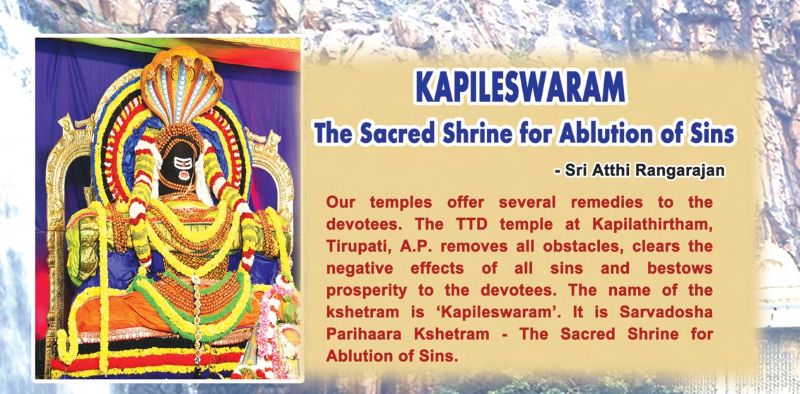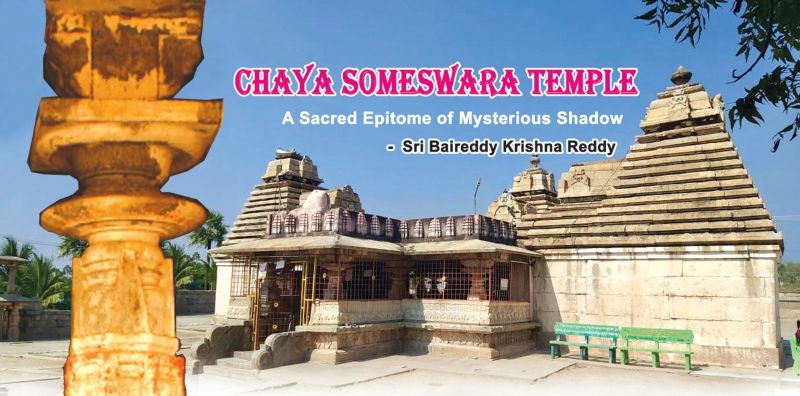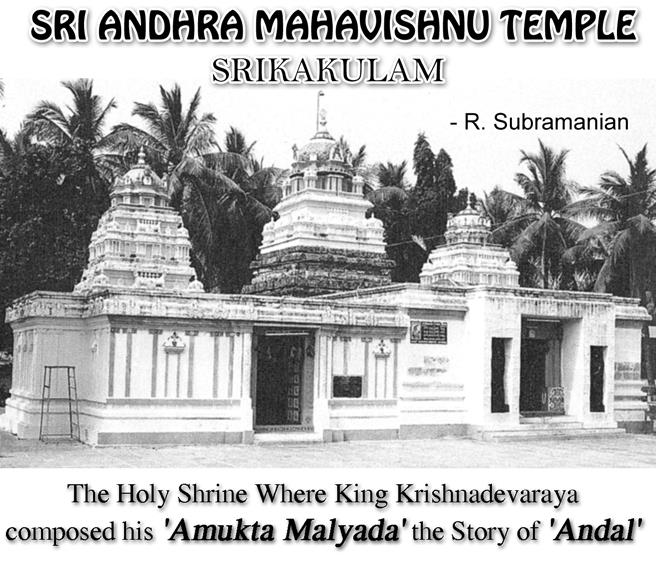Sri Kapileswara Swamy Temple (Kapila Lingam) – Tirupati “Sarvadosha Parihaaraka Lingam Naumi Maha Kapileswara Lingam” The above Sloka makes it amply clear that worshipping Lord Shiva at this shrine is enough to break free from all shackles in life. Sri Kapileswara Swamy temple at the foot of Tirumala Hills in Tirupati derived its name from Read More
Category: Hindu Temples
Hindu temples are known by many different names, varying on region and language, including Alayam, Mandir, Mandira, Ambalam, Gudi, Kavu, Koil, Kovil, Déul, Raul, Devasthana, Devalaya, Devayatan, Devakula, Devagiriha, Degul, Deva Mandiraya, and Devalayam
Chaya Someswara Swamy Temple, Panagal (Nalgonda)
Sri Pachchala Someswara Swamy Temple Chaya Someswara Swamy temple is situated in a village called Panagal, 10 km to the east of Nalgonda, but now a part of the town. It is 113 kms away from Hyderabad, on the Narketpally-Addanki Highway connecting the National Highway 65 at Narketpally in Telangana and the National Highway 16 Read More
Chidambaram – The Sublime Abode of Nataraja Swamy
Thillai Nataraja Temple Chidambaram In Chidambaram, there is a very significant temple of Lord Shiva in His dancing form as Nataraja Swamy, a unique form of the Lord in His cosmic dance. Surrounded by forests, sea and rivulets, Chidambaram is a beautiful and serene pilgrim centre with lush greenery nearby. It is located in Cuddalore Read More
Mari Tirupati (Small Tirupati)
Mari Tirupati – Bangalore There are many temples of Lord Venkateswara in Bengaluru in Karnataka State. One of them is very old as it belongs to the 17th century. It is “Kote Venkateswara temple” near K.R Market. There is one temple in Vyalikaval near Chowdiah Memorial Hall under the auspices of the T.T. D. This Read More
Sri Lakshmi Narasimha Swamy Temple, Wazirabad (Vadapalle)
This article is on – Sri Lakshmi Narasimha Swamy Temple, Vadapalle(Wazirabad) Lord Narasimha Lord Narasimha is the most revered God of the people of Andhra. Several famous temples of Lord Narasimha make their presence felt throughout Andhra Pradesh. Of many temples of Narasimha spread all over, the five temples are very important. 5 Divine Temples Read More
Mattapalli – Sri Lakshmi Narasimha Swamy Temple
This article is on – Sri Lakshmi Narasimha Swamy Temple, Mattapalli Lord Narasimha Lord Narasimha is the most revered God of the people of Andhra. Several famous temples of Lord Narasimha make their presence felt throughout Andhra Pradesh. Of many temples of Narasimha spread all over, the five temples are very important. 5 Divine Temples Read More
Sri Yogananda Narasimha Swamy, Vedadri
This article is on – Sri Yogananda Lakshmi Narasimha Swamy, Vedadri Lord Narasimha Lord Narasimha is the most revered God of the people of Andhra. Several famous temples of Lord Narasimha make their presence felt throughout Andhra Pradesh. Of many temples of Narasimha spread all over, the five temples are very important. 5 Divine Temples Read More
Sri Panakala Narasimha Swamy, Mangalagiri
This article is on – Sri Panakala Narasimha Swamy – Panakalarayudu Lord Narasimha Lord Narasimha is the most revered God of the people of Andhra. Several famous temples of Lord Narasimha make their presence felt throughout Andhra Pradesh. Of many temples of Narasimha spread all over, the five temples are very important. 5 Divine Temples Read More
Sri Andhra Mahavishnu Temple, Srikakulam
Srikakulam Andhra Mahavishnuvu Temple, Srikakulam Sri Andhra Mahavishnu temple on the banks of the Krishna river is located in Srikakulam of Krishna district. Sri Andhra Maha Vishnu told Sri Krishnadevaraya to compose the story of his wedding with Andal at Srirangam. He also ordered the Emperor to tell the story in the Telugu Language. The Read More
Sri Bhakthavatsala Temple, Cheranmahadevi
Cheranmahadevi – Cheran Mahadevi Chaturvedi Mangalam Sri Bhakthavatsala Temple One of the many divine gunas of Sri Maha Vishnu is “Vatsalya”. The word vatsam in Sanskrit refers to a calf and the compassion that the cow shows to her calf is called Vatsalya. The devotees of the Lord have surrendered ourselves at His Lotus Feet Read More



